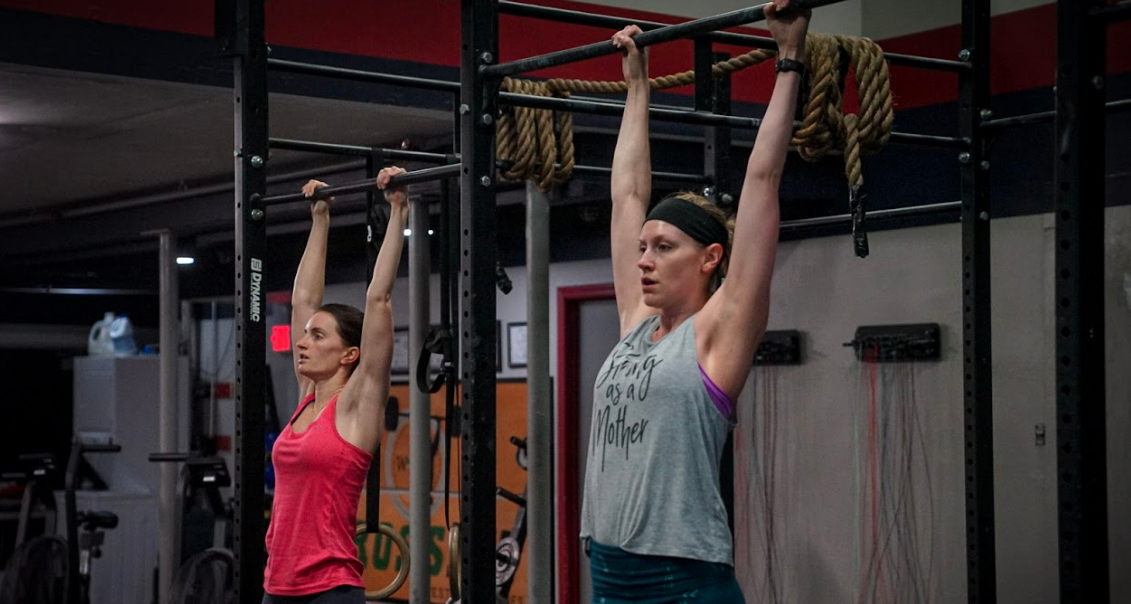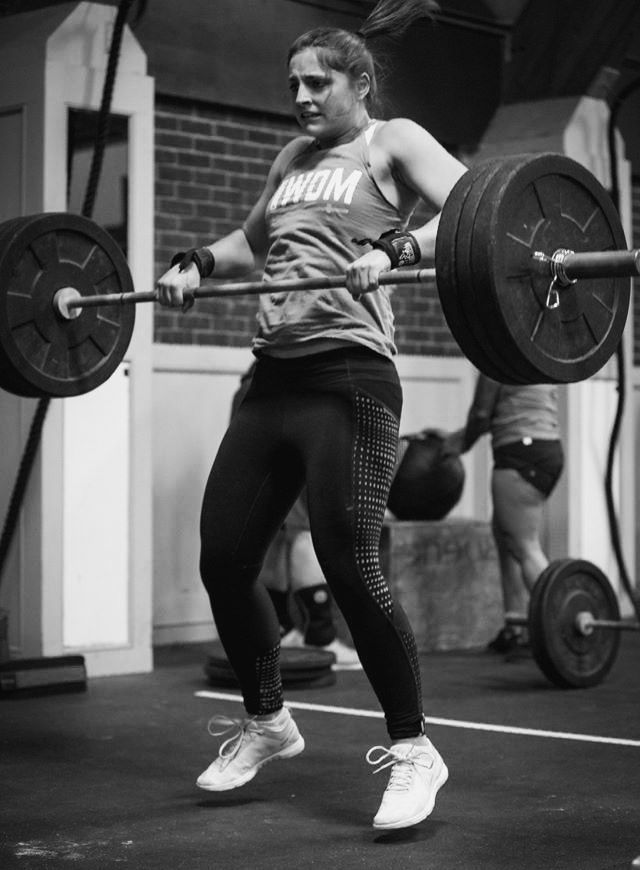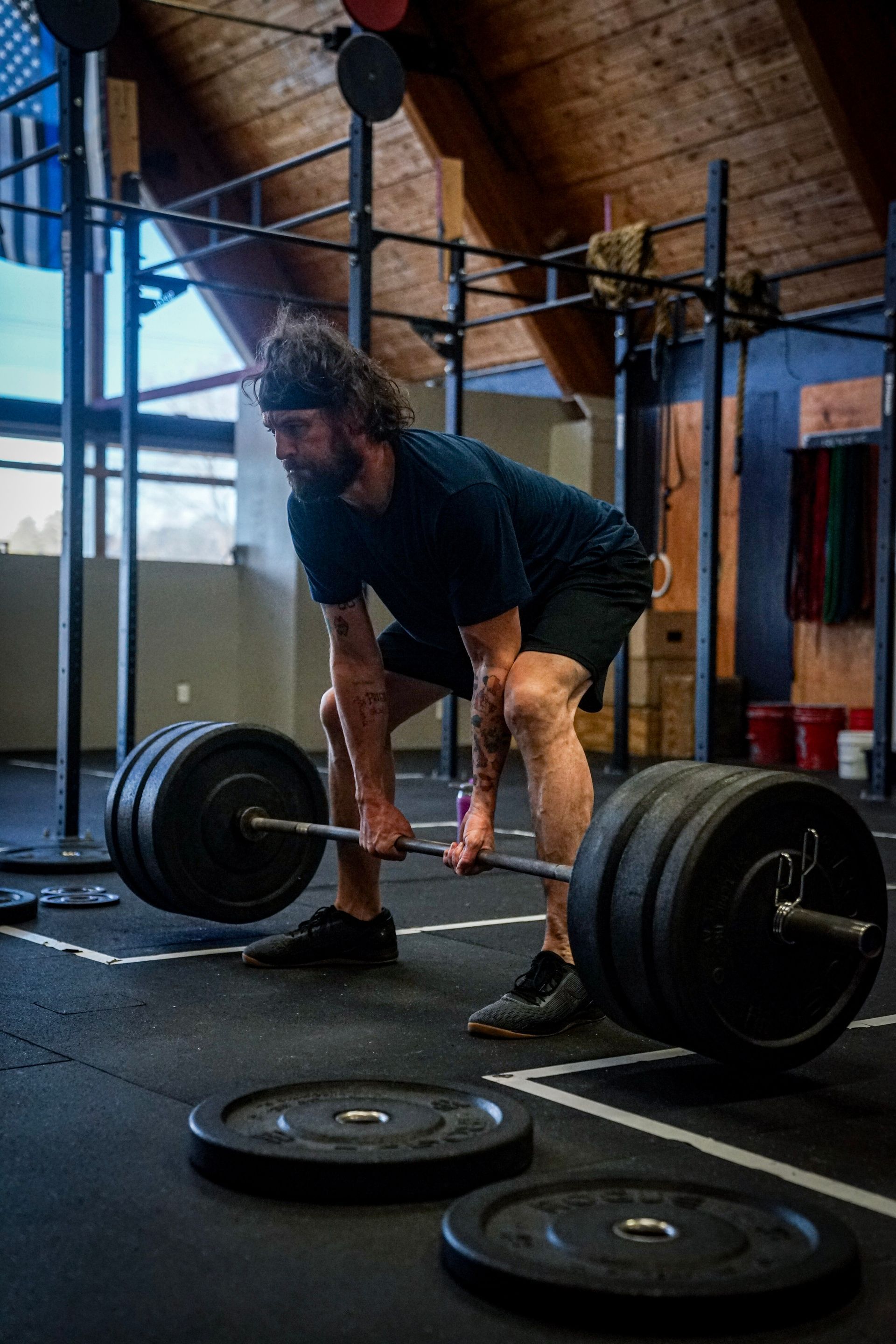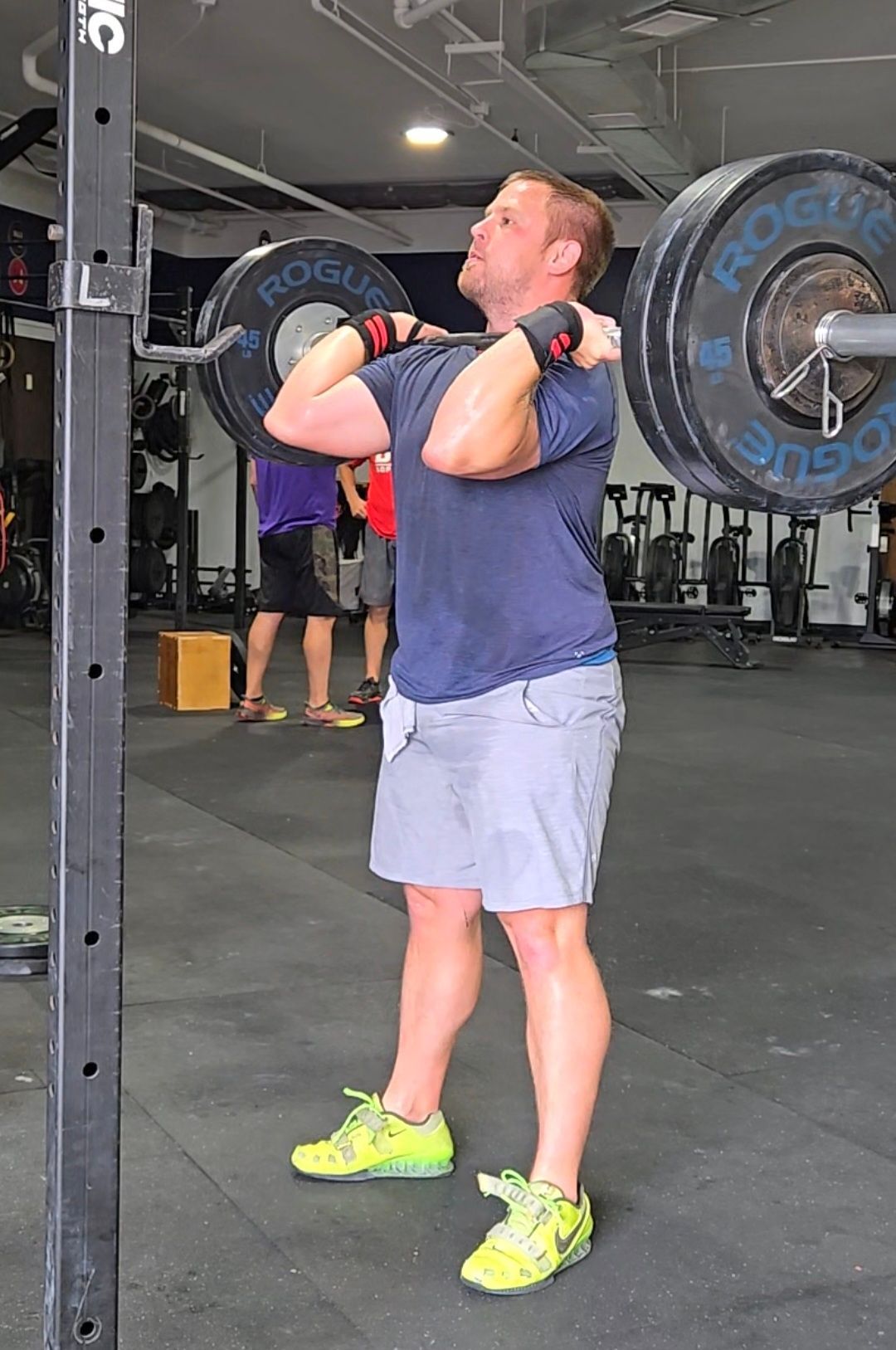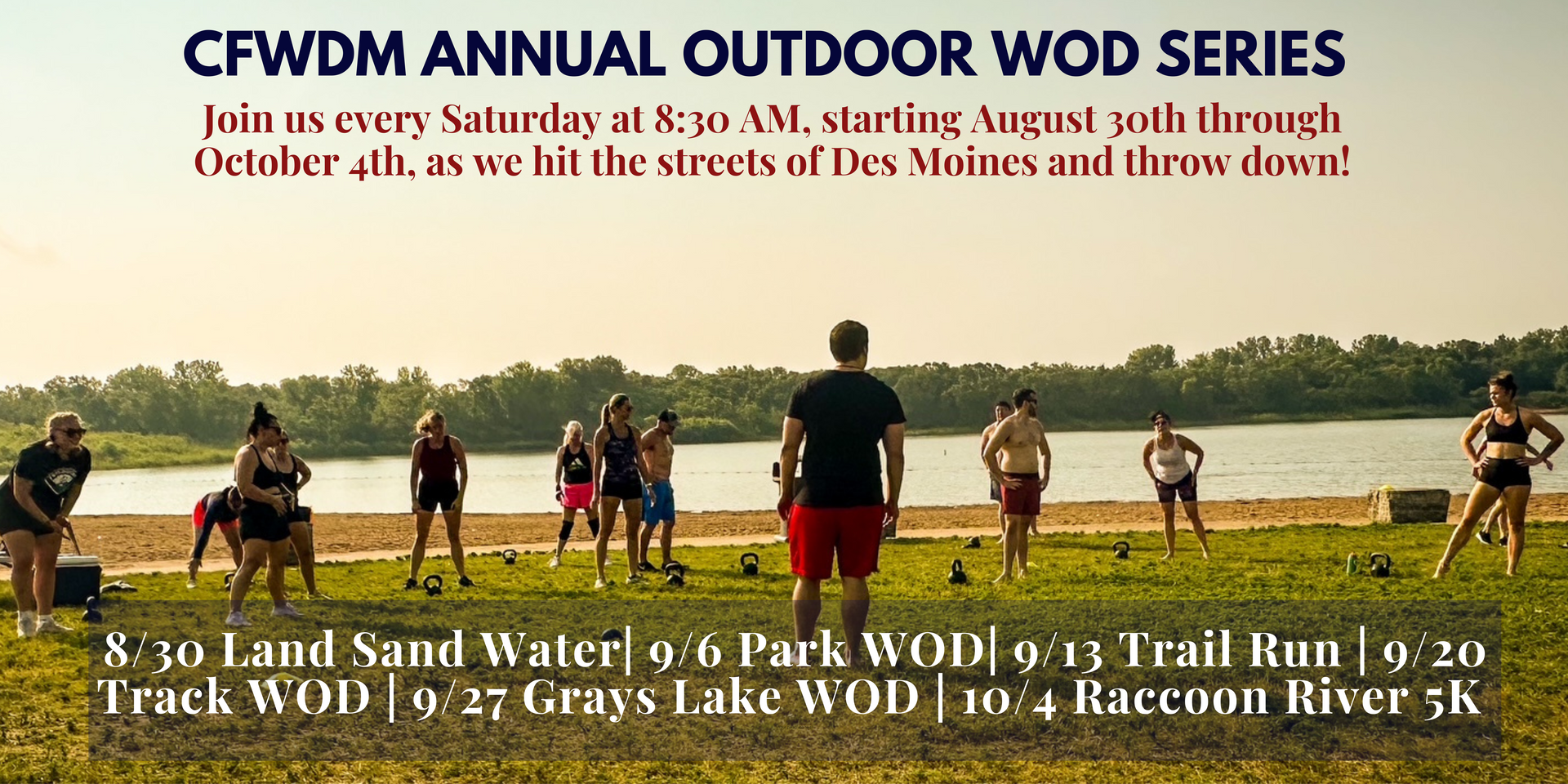October Newsletter
October Newsletter
VIDEO WALKTHROUGH OF OCTOBER NEWSLETTER
Unpacking each area a little deeper, but reading would still be recommended!
Welcome New Athletes!
Ethan Ollom - 4:30 PM
Allie Fazio - 12:00 PM
Gus Szymanska - Evenings
Programming Emphasis
Gymnastics
We've been lifting with two major goals in mind for the past 6 months. With newer athletes this provided a great opportunity for them to get to focus on developing positional awareness and strength in the core weightlifting movements!
- Back Squat
- Shoulder Press
- Deadlift
- Snatch
- Clean and Jerk
For seasoned athletes this provided a platform to help continue enhancing these movements by doing some progressive overload.
And for seasoned athletes this provided a platform to help continue enhancing these movements by doing some progressive overload.
Now we will be stepping into a focus on gymnastics beginning October 13th. This will focus primarily on two movements - Pull-Ups and Dips. The KING and QUEEN of calisthenics. Developing the same type of awareness and exposure to these will help us all move closer to the goal of achieving your first ones or bridging the gap to higher level movements or maybe doing more workouts "Rx'd".
Strength to bodyweight ratio... gymnastics are movements that require only your bodyweight. They demonstrate ones competency to move their body and a big factor of that is how much you weigh! The leaner you are (less body fat) the easier these movements will be. The more weight you carry, it will be harder and if you are strong, but have more body fat - the endurance of these movements will be the bigger issue!
Use this season to listen to your body. Let the programming work it's magic, but take responsibility in growing conviction in your body weight. We are designed to be able to do these movements and it is my hope and goal to get all of you to be able to do a pull-up and dip!
Fall Pre-ORders
T-Shirts
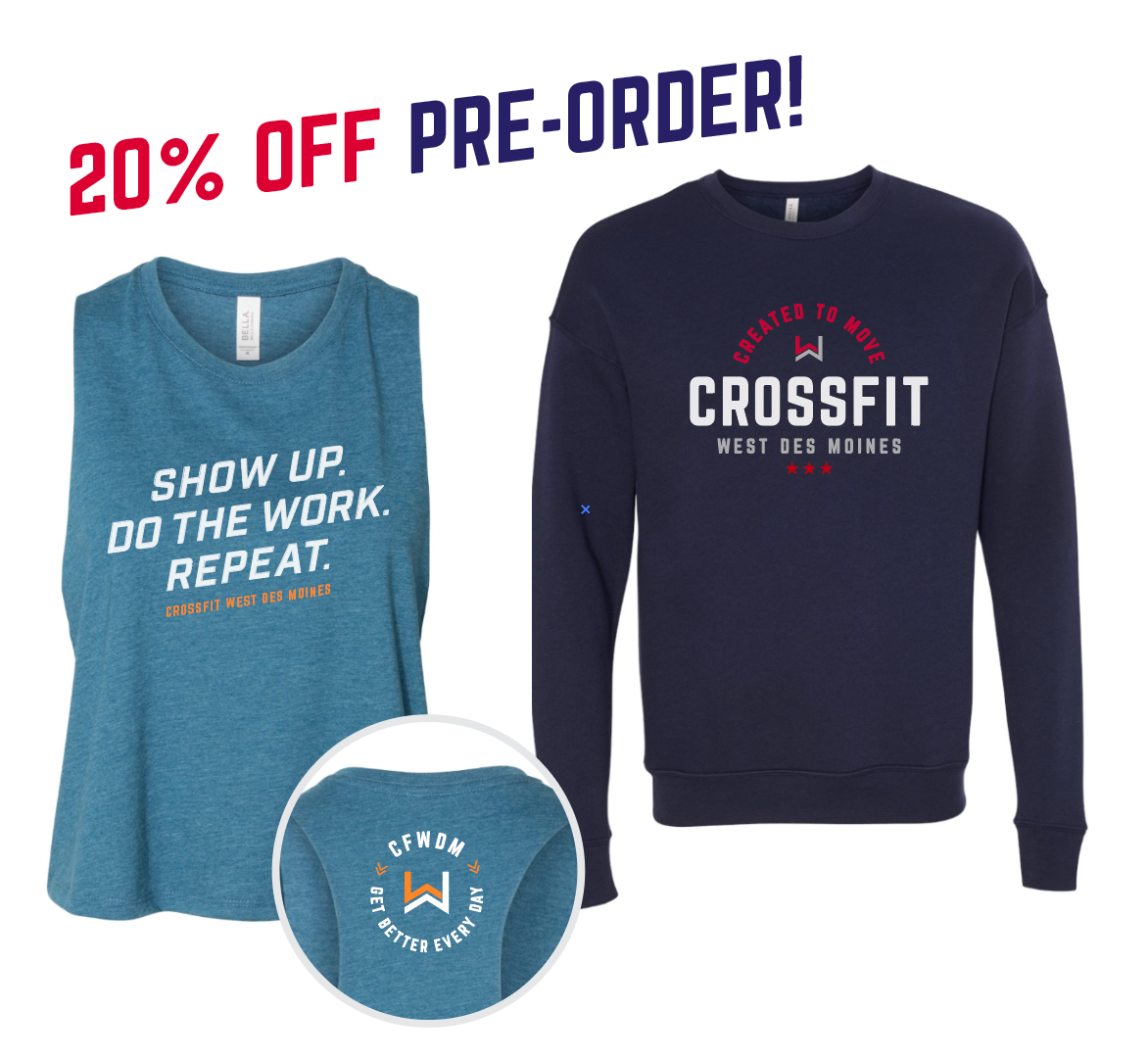
T-Shirt Orders Due THIS Sunday, October 12th!
Rehband
Training Gear

Rehband Orders Due Friday, October 31st!
Outdoor series
Recap
THE BEST WEATHER WE'VE EVER HAD!
This year was incredible! Some things we did differently...
- Ran the series 6 back to back weeks.
- Added "The Impossible Mile"
- Provided some beverages!
- Moved times to 8:30 AM
- Got park approval ahead of time ;)
We were spoiled with amazing weather. If you made it out there then great for you. Thank you for being apart of it!
We will continue to get outdoors through the Fall and Winter with the Monthly RUCKS! This is now included in your CrossFit Membership.
Guys, embrace the outdoors. It's good when it's hot, it's good when it's cold. The more exposure you have the more resilient you will become. The better you will sleep. The faster you will heal. The clearer you will think. We do these workouts not to just get a workout in... but to also be present in the natural spaces around us!
Athlete Development
what is "intensity"?
When we talk about intensity in CrossFit, it’s easy to picture going all out — lungs burning, muscles shaking, and a puddle of sweat on the floor. But intensity is more than just redlining. Intensity is simply the degree of effort relative to your own capacity and goals. For one athlete, that might mean hitting a new personal record. For another, it might mean pulling back to move better or recover smarter. The right intensity changes day to day depending on sleep, stress, soreness, and what your body needs to adapt.
In CrossFit, intensity is often measured by how much work is done in a certain amount of time — speed, load, and volume all play a role. Moving faster increases intensity. Lifting heavier increases intensity. Tackling a more challenging movement (like chest-to-bar pull-ups instead of ring rows) also increases intensity. Even doing the same workout with fewer breaks or better movement efficiency can dramatically change how intense it feels — and what stimulus you get from it.
The key is to understand that intensity is the driver of results, but it must be applied intelligently. Some days, the right move is to push the pace and test your limits. Other days, intensity might look like focusing on perfect technique, lighter loads, or simply showing up and moving with purpose. It’s not about going 100% every session — it’s about applying the right intensity for the goal of the day.
Next time you see a workout, ask yourself: What’s level of intensity do I need for my goals (both short and long term)? Am I supposed to go heavy, move fast, or stay smooth and controlled building in extra rest and even cutting back some reps? Matching your effort to that purpose is how you get fitter, stronger, and more resilient — without burning out along the way.
Consistency Crew
Consistency Crew will now be announced in a separate email! Be on the look-out each month to see if you qualified to win a free t-shirt!
You'll also be able to view the spreadsheet to view and encourage some of your friends in the gym too!
Year of nutrition
moderatiton is everything
One of the most powerful skills you can develop in both nutrition and life is moderation. It’s not about strict rules or endless restriction—it’s about awareness, balance, and control. In CrossFit, we believe in fueling for performance, longevity, and joy, and the Zone Diet provides a simple but powerful framework for this. It encourages eating mostly whole, nutrient-dense foods while still allowing flexibility for the 25% of your diet that might include processed or starchy options like rice, potatoes, or even the occasional treat.
The beauty of the Zone approach is that it teaches you how to measure and moderate. When you choose high-quality foods—lean proteins, colorful vegetables, healthy fats, and fiber-rich carbs—you get more volume for fewer calories and greater nutritional benefit. When you choose lower-quality options—high-fat proteins, processed carbs, or foods higher on the glycemic index—you simply eat less of them. This not only helps you stay balanced physically, but it trains your mind to make conscious choices, understanding that food quality and quantity always work together.
The goal isn’t to eliminate your favorite foods; it’s to learn how much of them fits your goals. You can enjoy a burger or a slice of pizza and still see incredible results in the gym—when you understand moderation. That awareness builds a healthy relationship with food, where you’re not controlled by cravings or guilt, but guided by understanding and purpose.
And moderation doesn’t just apply to nutrition. It’s a life skill. The same awareness you bring to your plate should carry into other parts of your day—limiting screen time, balancing work and recovery, or knowing when to push hard and when to rest. The practice of moderation builds discipline, patience, and self-awareness—qualities that translate directly to your performance inside and outside the gym.
So this month, practice moderation as a skill. Notice your habits, listen to your body, and remember that more isn’t always better. Whether it’s food, work, or workouts, learning to say “that’s enough” might be the most powerful step toward long-term health, happiness, and progress.
"800 Gram Challenge"
Update
Full transparency... last month I kicked off 1-on-1 Nutrition coaching and felt the need to try to help everyone! Truth is, I still feel that way but bit off more than I could chew.
The 800g challenge will be something that we tackle as a group, but not at this moment. The set-up and intention it required to get 1-on-1's going has been great and I'm very encouraged from the response that I got.
If you are interested in doing your own 800g Nutrition Challenge just respond to this email and I will follow up with you about the rules and see if I can partner you up with others. Below is the link to the 800g Challenge and for anyone wanting to get more in tuned with their nutrition... this is an amazing place to start!
Upcoming Events
Celebrating Emily Dekkers and Beth Hansen!
10/10 - Friday - BABY WOD
Veterans Day WOD
11/11 - Tuesday - Chad 1,000x

Discipline equals Freedom,
Coach Kris

